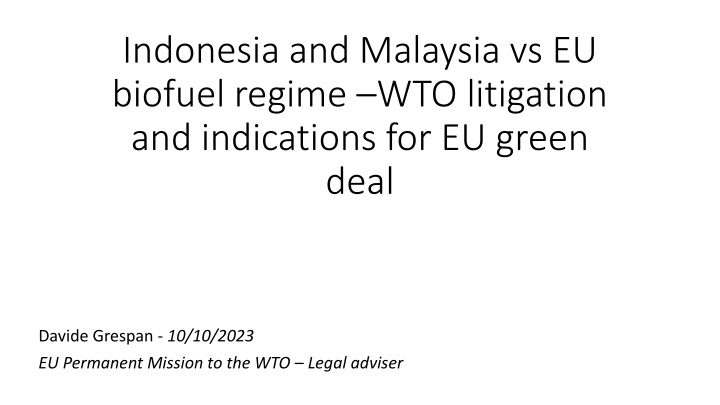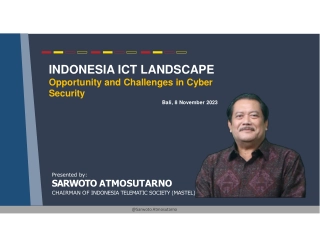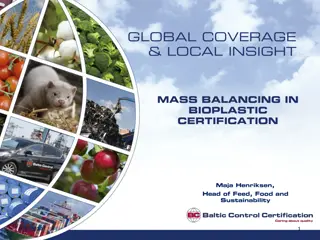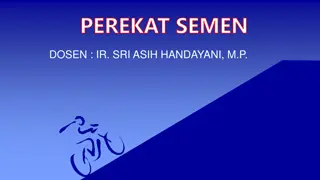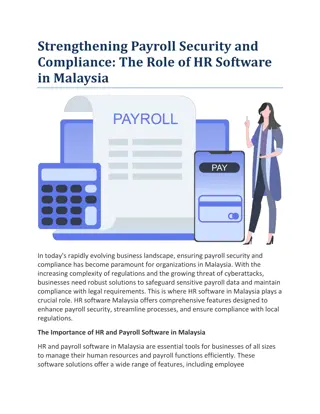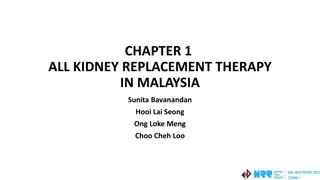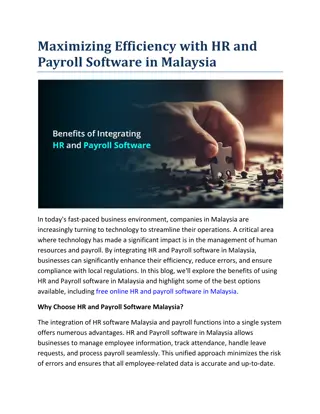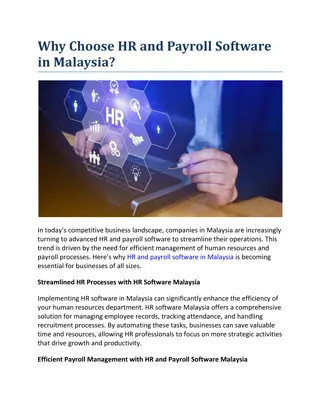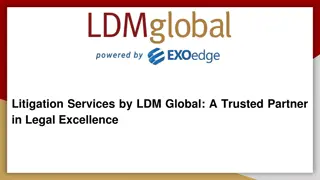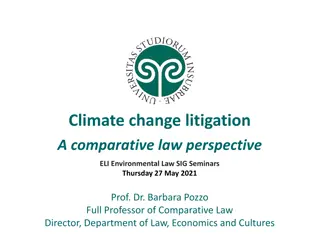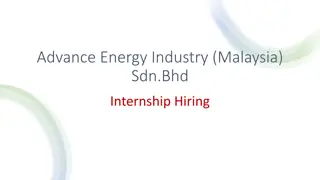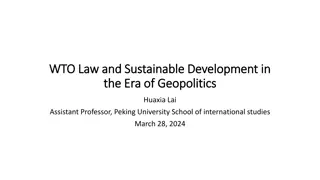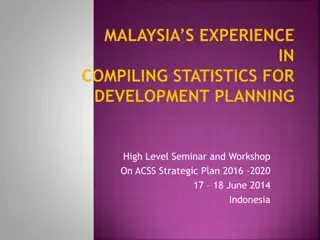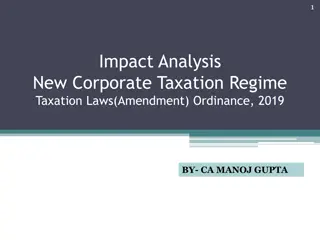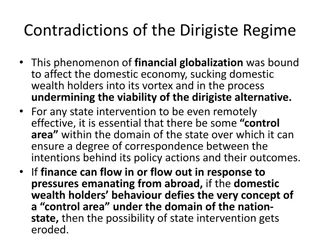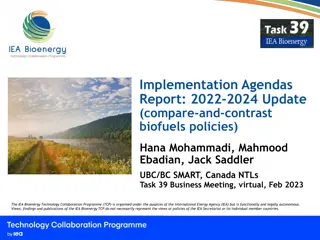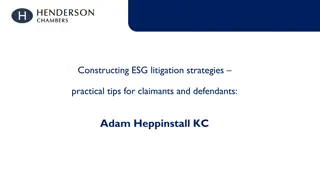EU Biofuel Regime & WTO Litigation: Indonesia, Malaysia vs. Sustainability
The content delves into the WTO litigation between Indonesia, Malaysia, and the EU regarding biofuel regulations, highlighting the Renewable Energy Directive (RED), ILUC characteristics, and the EU's approach to high ILUC risk biofuels. It sheds light on the complexities of biofuel production, land use issues, and sustainability criteria within the EU's energy policies.
Download Presentation

Please find below an Image/Link to download the presentation.
The content on the website is provided AS IS for your information and personal use only. It may not be sold, licensed, or shared on other websites without obtaining consent from the author.If you encounter any issues during the download, it is possible that the publisher has removed the file from their server.
You are allowed to download the files provided on this website for personal or commercial use, subject to the condition that they are used lawfully. All files are the property of their respective owners.
The content on the website is provided AS IS for your information and personal use only. It may not be sold, licensed, or shared on other websites without obtaining consent from the author.
E N D
Presentation Transcript
Indonesia and Malaysia vs EU biofuel regime WTO litigation and indications for EU green deal Davide Grespan - 10/10/2023 EU Permanent Mission to the WTO Legal adviser
Two WTO almost parallel cases: claims largely overlapping one panel DS593 EU Palm Oil (Indonesia) Consultation request 9 December 2019 Panel composed 12 November 2020 DS600 EU and Certain Member States Palm Oil (Malaysia) Consultation request 15 January 2021 Panel composed 29 July 2021
The Renewable Energy Directive (RED) amended several times RED II (2018) Sets binding targets for the share of renewable energy in the EU total energy consumption (32%) and in the transport sector (14%) Regulates which biofuels can be counted towards the transport sector target All conventional biofuels max 7 % because they induce Land Use Change (LUC) which can cause GHG emissions Direct Land Use Change: e.g. a forest is cut down to meet biofuel crop demand addressed notably by sustainability criteria of RED (II) Indirect Land Use Change: when non-agricultural land is brought into agricultural production as a consequence of agricultural land previously being used for non-fuel demand being diverted to the production of feedstock used for biofuels
ILUC characteristics Impossible to observe directly Cannot be modelled in the same way as DLUC Can occur anywhere in the world Transmitted through global markets for agricultural commodities Not accepted by the whole scientific community Variation among ILUC emissions estimations in scientific literature EU first regulator worldwide to address ILUC emissions
The EU biofuels regime conventional biofuel production requires land High ILUC formula: Methodology based on available literature and on observed rate of expansions of a given crop on High Carbon Stock/Biodiverse (HCSB) land Which biofuel feedstock has a high risk of significant expansion of the production area into HCSB land (absolute and relative) Currently among the different biofuel crops only palm oil qualifies as high ILUC risk Eligibility of High ILUC risk biofuels to be treated as a renewable fuel is subject to a cap and phase out Low ILUC risk certification Fuels produced from feedstock demonstrated not to have given rise to ILUC can be treated as all other biofuels.
Indonesia and Malaysia challenges Multiplicity of legal claims under TBT, GATT (NT, MFN, quantitative restriction, etc.) Overarching arguments: Extraterritoriality of EU measures: EU dictates what and how to produce in Ind or Mal Disguised protectionism because the EU does not produce any palm oil: green washing Lack of solid scientific foundation for estimation of ILUC emissions Not based on international standards should have waited for a multilateral solution. Data used for high ILUC formula not up to date and biased against palm oil Defects in the implementing regulatory framework (too complicated, not detailed enough, etc.)
EU overarching defence Measures are origin neutral and not de facto discriminatory Necessary to fight climate change and biodiversity destruction These objectives are reflected in Article XX GATT and Recital 6 TBT: necessary to protect public morals necessary to protect human, animal or plant life or health relating to the conservation of exhaustible natural resources if such measures are made effective in conjunction with restrictions on domestic production or consumption
The EU Green Deal Climate change and environmental degradation are an existential threat to Europe and the world. The EU Green Deal is a comprehensive policy initiative by the European Union aimed at making the EU climate-neutral by 2050. tackling climate and environmental-related challenges is this generation s defining task. The atmosphere is warming and the climate is changing with each passing year. One million of the eight million species on the planet are at risk of being lost. Forests and oceans are being polluted and destroyed (Green Deal communication, first para)
Some green deal measures may face similar criticism Carbon Border Adjustment Mechanism (CBAM) Renewable Energy Directive EU Regulation on deforestation-free supply chains
